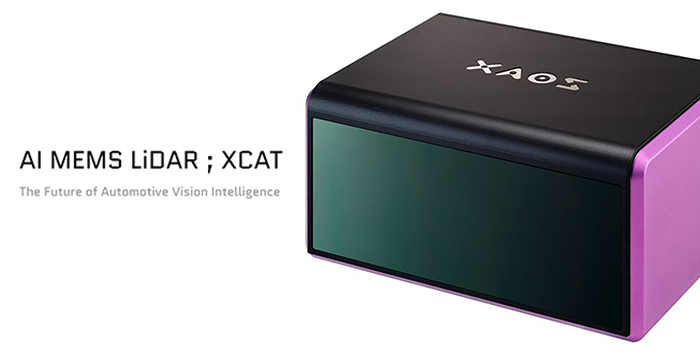Korean startup XAOS Motors will shortly begin selling its AI MEMS lidar XCAT, which it says is the world’s first ‘customizable’ lidar with integrated AI technology. The XCAT features software that makes it possible to change scan angle, resolution and optimal scan distance without switching parts or changing hardware. Furthermore, XCAT carries out active scans via algorithms powered by artificial intelligence. It can immediately trace any risky objects facing the driver in dangerous situations, while scanning the whole field of view in normal situations.
“Global lidar companies are targeting long distance scanning of 200m at a relatively lower price of US$1,000,” said Keon-Young Lee, VP, XAOS Motors. “However, the target distance must be increased and the price must drop even lower for automobile makers to implement lidar for urban or highway use. XCAT is an AI lidar that solves the existing core issues of lidar such as unit price, scan distance and mass production. The AI-based lidar system is being developed to enable production on a large scale.”
XAOS Motors developed both the lidar sensor and the XCAT View 3D vision software, which can support any customization requirements from clients developing autonomous driving systems and advanced driver assistance systems (ADAS). The company says it is completing final production preparations, with a view to supply the XCAT Pro to global automotive companies from February 2021. It estimates that an XCAT lidar optimized for mass production could reduce unit production cost to less than US$500.
“We completed the development of a prototype in the first half of 2020 with a scan distance of 300m and a mass production cost of US$200,” said Lee.
The company is also working on a flash lidar based on integrated control technology featuring a camera and lidar, dubbed ‘3D camera’. XAOS Motors says it completed registration of a patent for its flash lidar technology in Korea back in September 2019, with a PCT and US patent application already underway.
“XCAT LED is a flash lidar that uses the existing automotive LED headlamp,” explained Lee. “XCAT LED is not simple built-in, but is designed with a light control integrated method. XCAT LED is a technology that combines the lidar and camera into one system, and can also be called a ‘3D camera’. The maximum distance of current technology hasn’t changed much from a few meters to tens of meters. However, XCAT LED is a long-range flash lidar capable of taking pictures including distance information up to several hundred meters.”


